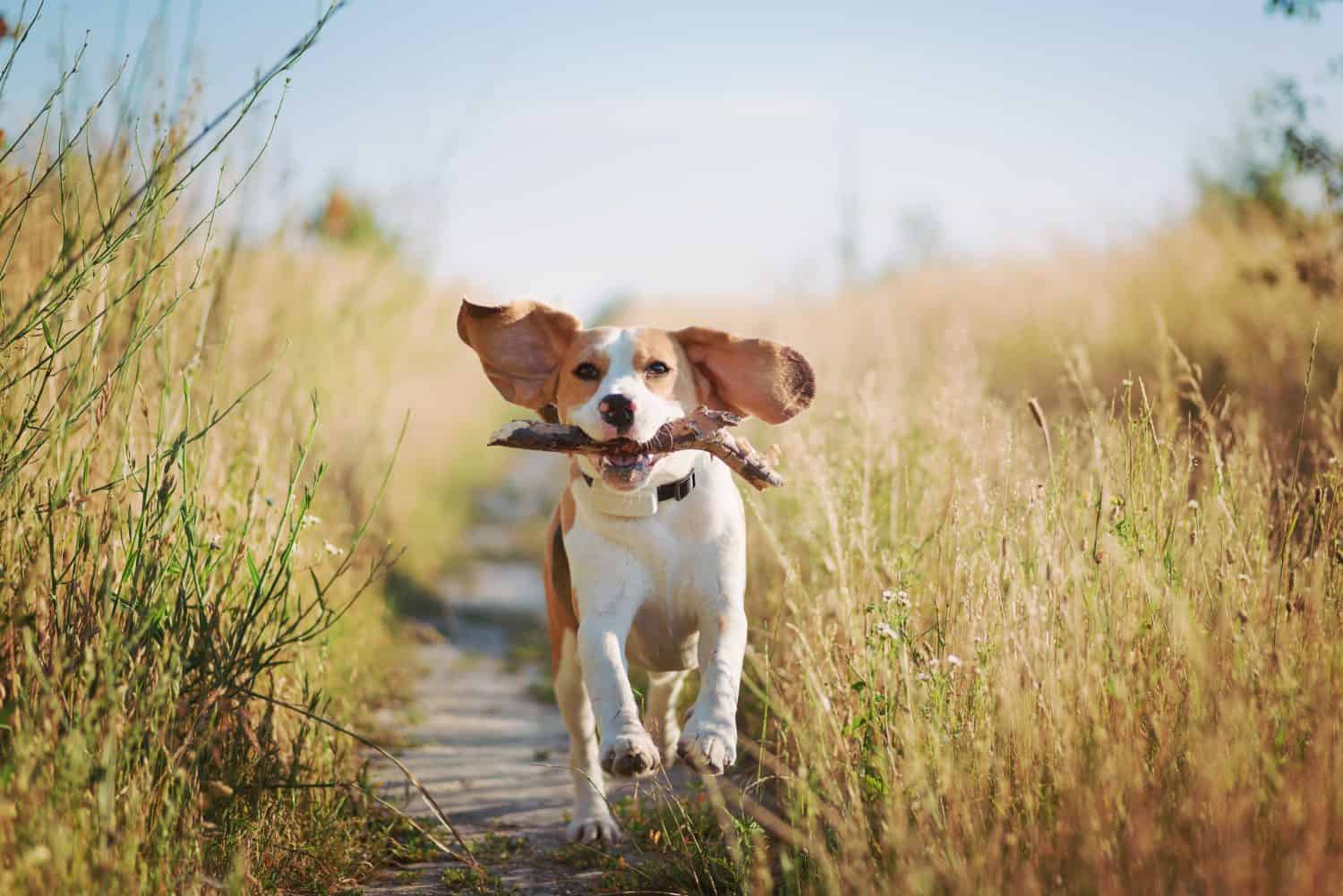Beagles were originally bred as hunting dogs, and hunters still use them as hunting dogs today. They have a great sense of smell that allows them to track down rabbits easily. However, they are a very purpose-built dog breed. While they’re great at tracking rabbits, that’s about all they’re good at!
This breed can be wonderful for some hunters, especially if you want a canine to track down rabbits for you. However, they do have many limitations, too.
Below, we’ll take a look at the pros and limitations of beagles as hunting dogs.
1. Exceptional Sense of Smell

These dogs
loveto be outside and hunting, though they also make great pets.
©Tetiana Garkusha/iStock via Getty Images
Beagles have one of the strongest senses of smell, as they are a hound. They’ve been bred for this trait over hundreds of years, and many breeders still focus somewhat on how good these dogs are at tracking. Their nose easily beat that of many other dogs, allowing them to track rabbits through rough conditions.
If you need a dog that can track well, you can’t get much better than a beagle (especially when it comes to rabbits).
2. Compact Size

The beagle’s smaller nature means they can fit in small spaces after rabbits and other small game.
©iStock.com/Przemysław Iciak
Some breeds have a stronger sense of smell than a beagle, like a bloodhound. However, beagles are smaller and more compact than many of these breeds. They can fit through dense undergrowth after rabbits, where other dogs wouldn’t be able to. They fit in about the same places as small game, which gives them a distinct advantage.
3. Energetic and Agile

The long-lasting stamina of a beagle makes them great hunting companions.
©tetiana_u/Shutterstock.com
Beagles have a very high stamina, which allows them to keep going after game for hours – even through tougher terrain. During field competitions, many beagles will participate in several hour-long stints in a single day. If more hunting is needed, most beagles are ready to keep going.
This can be a huge advantage to hunters, as they often don’t have to worry about their beagles tiring very quickly.
4. Social

Beagles are incredibly food-driven, which can make them prone to obesity. Be cautious of feeding them table scraps and leaving their food bowls constantly full.
©Prapat Aowsakorn/iStock via Getty Images
This breed is incredibly social. They have a true pack mentality, which allows them to get along with other beagles without much of an issue – even if they’ve never met them before. During field trials, beagles are usually hunting alongside up to ten other beagles, most of which they have never met before. However, fights are exceedingly rare.
Their social and friendly temperament extends to humans, too. They can make wonderful family dogs for this reason. They get along with just about everyone.
5. Adaptability

This breed can adapt well to various climates, including snowy conditions.
©oleghz/iStock via Getty Images
Beagles are able to get used to many different climates. They can track in cold, wet weather and in the heat of Southern summers. They’re able to track over rocky terrain and in marshes. Their adaptability allows a hunter to take his or her beagles just about anywhere without having to worry about their ability suffering.
These dogs are also adaptable to different home situations. As long as they are given enough exercise, they can get used to living in an apartment with ease. At the same time, they also do well on farms.
6. “Selective” Hearing

A beagle in the midst of tracking will block out all other distractions, even you, when you call their name.
©tsik/Shutterstock.com
When a beagle is tracking, they will not hear you. It doesn’t matter how well your beagle is trained. They have a one-track mind whenever their nose hits the ground. You will never train a beagle to have a reliable recall. No amount of training will overcome this instinct.
Therefore, beagles do have a higher tendency to wander off. While beagles are often trained to only hunt rabbits, they may also follow other trails (or seemingly make up trails if they are bored). It isn’t hard for them to end up hours from home with no idea of how they got there.
7. Training Difficulties

You may have trouble teaching your beagle basic commands, but they are generally well-behaved and friendly.
©Alexey Androsov/Shutterstock.com
Beagles were bred exclusively to track rabbits, which doesn’t require any training. Therefore, they weren’t bred with obedience in mind. Training is often a challenge. It can be hard for beagles to master even basic commands, especially when you throw their selective hearing into the mix. In many cases, you cannot rely on their obedience at all.
That said, they are naturally well-behaved dogs due to their friendly nature. Therefore, their lack of trainability often isn’t missed that much.
8. Exercise Need

Bred to track game for hours, beagles have a higher exercise need and are best for families with an active lifestyle.
©Przemek Iciak/Shutterstock.com
These dogs do have a somewhat high exercise need, as they were made to track all day. It can be hard for more laid-back families to meet this need. Therefore, we typically only recommend them for those living a more active lifestyle. They do great in homes with active children, for instance.
When your dog isn’t hunting, be sure to provide some sort of exercise. Daily walks with lots of stops to sniff are a great option.
9. Loud

These dogs will throw their head back when baying. However, this
isn’thowling. Their head typically goes right back down after the bark.
©LivingThroughTheLens/iStock via Getty Images
Beagles do not bark like your average dog. Instead, they “bay,” which is a mix between a howl and a bark. They’re very loud, which is great when you’re trying to follow them through the woods. However, in an apartment or home, they can become very overwhelming unless trained properly (and remember, training can be a challenge for this breed).
For this reason, we don’t recommend them for those that are sensitive to loud noises. They really do best when a little barking won’t bother their owners.
10. Health Concerns

The small, short nature of beagles can lead to spinal injuries.
©Beach Creatives/Shutterstock.com
Most beagles are very healthy, especially when bred for hunting (and not for looks). However, beagles do have shorter legs and longer backs, which puts them at risk for spinal injuries. While this is relatively rare, intervertebral disc disease can potentially lead to paralysis.
Climbing stairs and jumping can increase the chance of back injuries. Consider alternative ways for your dog to get around.
The photo featured at the top of this post is © Andrii Zastrozhnov/iStock via Getty Images
Ready to discover the top 10 cutest dog breeds in the entire world?
How about the fastest dogs, the largest dogs and those that are -- quite frankly -- just the kindest dogs on the planet? Each day, AZ Animals sends out lists just like this to our thousands of email subscribers. And the best part? It's FREE. Join today by entering your email below.
Thank you for reading! Have some feedback for us? Contact the AZ Animals editorial team.






